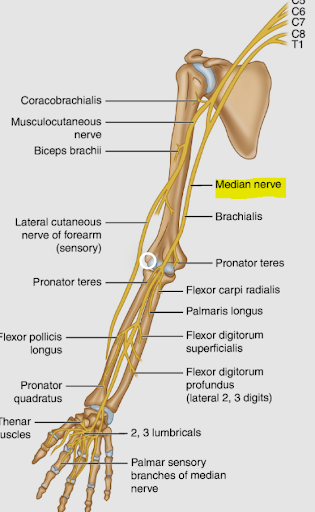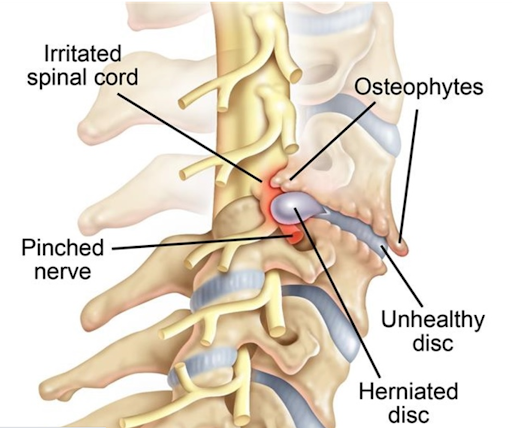Double crush syndrome is the phenomenon where there can be 2 distinct compressions along the course of a peripheral nerve. As nerves travel along their path they can be compressed and pinched by various structures. In the carpal tunnel, this is often the result of a ligament and flexor tendons compressing the median nerve, whereas, in the spine, nerves are often compressed by bulging/herniated discs, arthritic facet joints, or thickened spinal ligaments.
One of the most common types of Double Crush Syndrome occurs when the C5/C6 nerve root (in the neck) becomes pinched as it leaves the spine and then travels down the arm and then is compressed again at the carpal tunnel (as the median nerve).

Why is Double Crush Syndrome important?
Nerve injuries can cause pain, numbness, tingling, burning and weakness. If a nerve is injured in two separate areas then treating the nerve in both areas of injury is often important to achieve optimal results for a patient. This is why a proper diagnosis is a critical step in solving a nerve-related problem. A physician may want to order an MRI of the neck or a Nerve Conduction Study with Electromyography to see if a patient with numbness and tingling in the hands or arms has evidence of Double Crush Syndrome. Your provider should also ask important questions during an evaluation designed to pinpoint the area of trouble regarding the nerve in question.
References
E;, K. P. M. D. A. H. A. (2015). Double crush syndrome. The Journal of the American Academy of Orthopaedic Surgeons. Retrieved December 10, 2021, from https://pubmed.ncbi.nlm.nih.gov/26306807/.
Ochoa-Cacique D;Córdoba-Mosqueda ME;Aguilar-Calderón JR;García-González U;Ibarra-De la Torre A;Reyes-Rodríguez VA;Lomelí-Ramírez JDJ;Medina-Carrillo Ó;Sánchez-Calderón MD;Castañeda-Ramírez EA; (2020). Double crush syndrome: Epidemiology, diagnosis, and treatment results. Neuro-Chirurgie. Retrieved December 10, 2021, from https://pubmed.ncbi.nlm.nih.gov/33130027/.



